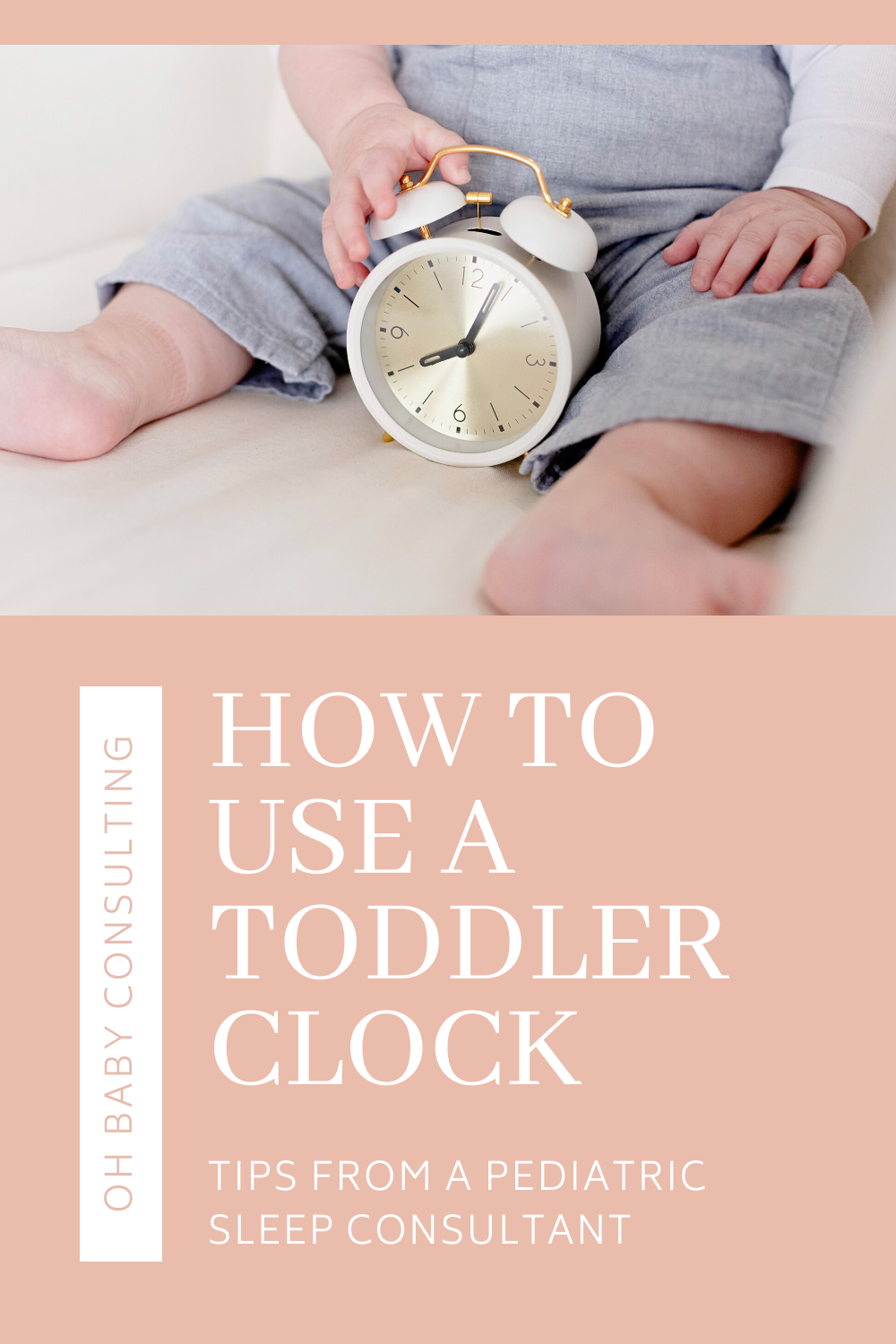How to Use a Toddler Clock
If you’re the parent of a toddler with sleep struggles, I highly recommend that you get yourself a toddler clock. Toddler clocks are a valuable sleep tool and provide very clear boundaries to your little one around when it is time for sleep and when it’s okay to get up.
When should I introduce a toddler clock?
Toddler clocks can be introduced to children as young as 22-24 months of age. Even if your toddler isn’t totally adept at the concept, it’s still a great way to lay the foundation for a skill that is going to be important when they move from a crib to a bed.
Why is a toddler clock helpful?
Toddlers are willful and stubborn little beings who love to push the boundaries. Toddler clocks are visual reminders of the boundaries around sleep. This can be extraordinarily helpful if your little one is:
- Stalling during the bedtime routine
- Waking up throughout the night
- Rising early in the morning
How do I use a toddler clock?
Using a toddler clock effectively will help your child understand the boundaries around sleep times. For example:
I lay quietly in my crib/bed until the light glows green/the happy face comes on/the clock changes colors, etc.
While this can seem like a lovely concept, please know that toddler clocks are not magic bullets. You definitely will have to teach your child how to use it.
I recommend that your toddler clock emit no light while your child is sleeping. Any sliver of light can impact the rise of melatonin (the sleepy hormone) and also sends signals to your child’s body that it’s time to get up. However, if your child is older than 2.5 and has expressed fears of the dark, it’s okay to have a soft red light glowing all night long. (Red is the least-disruptive color on the light spectrum and is less likely to trigger wake-ups.)
Once you’ve established how the clock looks during sleep times, it’s time to decide what will happen when it’s time to wake up. Depending on which clock you choose, you might have the option for it to glow a certain color, to change colors, or it to “wake up” and show a picture on its face.
After these decisions are made, you’ll explain to your little one what will happen:
“When the light is off/red, it’s time for sleep. You will lay quietly in your crib/bed and close your eyes. When the light comes on/turns green, it’s morning! Time to wake up and play!”
To help your child really grasp this concept, I recommend role-playing to show them what it’s going to be like when you use the clock. Practice laying down when the clock is off/red and pretend to sleep. Set the clock to “wake up” after a minute or two and pop up to show your child how it is now okay to be up and out of bed.
Which toddler clock should I get?
There are a variety of different options on the market, but a few of my favorites include:
Mella Ready to Rise by Little Hippo
[I independently source and vet any products that I choose to share on my site. If you buy from the links I’ve provided, I may receive a small commission, which in turn supports my work.]
If you’re dealing with a spirited little one and need more than just a toddler clock to solve their sleep struggles, let’s work together to get everyone sleeping all night long.
[This post contains some affiliate links but all product recommendations and opinions are my own. If you use these links to buy something, I may earn a small commission.]
If you’re exhausted, totally overwhelmed by your child’s sleep habits, or looking for answers to the sleep questions that keep you up at night (literally), then you’ve come to the right place. I’m Jamie, founder of Oh Baby Consulting, and my goal is to help your family get the sleep you need to not just survive, but thrive!

